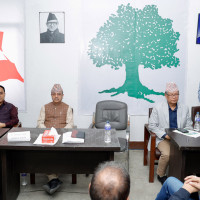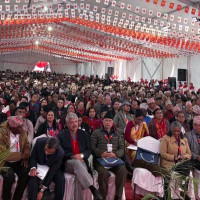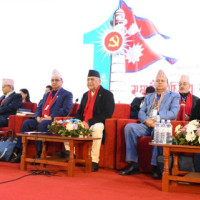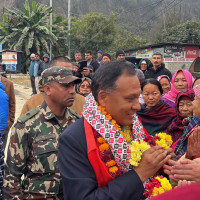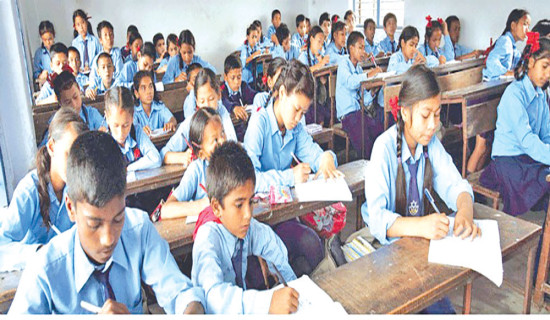- Sunday, 14 December 2025
Midday meal draws millions of kids to school
Kathmandu, Aug. 27: Recently, government schools have faced fewer issues with student absence following the introduction of the school meal programme. Padmakanya Vidyashram Secondary School in Dillibazar is one example that has seen a significant reduction in student absenteeism.
Many students at the school come from lower middle-class families, and the provision of a free meal at school has encouraged regular attendance, Rita Tiwari, the school’s head teacher said. Tiwari said that the midday meal has brought happiness in the face of students. Padmakanya Vidyashram’s experience is indicative of a broader trend in community schools across the country; stakeholders of schools are sharing similar experiences these days.
Following the implementation of the midday meal programme, student enrollment has become easier, and the dropout rate has decreased, said Deepak Sharma, Director General of the Centre for Education and Human Resource Development (CEHRD) said.
Despite these positive impacts, there are ongoing challenges with the programme. The government allocates Rs. 15 per student per day up to grade five, and Rs. 25 for students in the then Karnali Zone. However, this amount is insufficient to provide a fully nutritious meal, experts of nutrition said. As a result, some schools are found offering junk food or packaged meals, which fail to meet nutritional needs of children.
Dil Bahadur Gurung, headmaster of a school in Gorkha, criticized the government’s meal provision as inadequate. He pointed out that while the government funds meals for only 180 days, schools are legally required to be open for up to 220 days, resulting in a mismatch in meal provision.
In response to Gurung’s concerns, the director said students were not present all days during enrollment period and examination period, therefore the mismatch argument doesn’t hold.
To address the issue of inadequate allocations of budget for the midday meal programme, some local governments have provided additional funding for the same. The Kathmandu Metropolitan City (KMC) has added Rs. 15 extra per student. Due to that, students of schools under the KMC are able to get sufficient and nutrient food, Heramba Raj Kadel, headmaster of Viswa Niketan School, Tripureshwor said.
Currently, around 3 million students in community schools nationwide benefit from the programme.
Sharma acknowledged the programme’s positive effects on student enrollment and regularity. However, he admitted that there is a need to review the improvement.Concerning these all factors, Ministry of Education, led by Bidhya Bhattarai, has formed a task force, coordinated by spokesperson Keshab Dahal, to review the midday meal programme. The task force is also tasked with recommending the incorporation of home-grown food into the programme.
Sharma indicated that the CEHRD is prepared to implement any new plans proposed by the Ministry.
The government has already developed a food menu for schools, which includes cereals, roots, tubers, legumes, pulses, nuts, dairy products, and more, allowing schools to tailor meals according to their local production.




